For many Californians – and visitors, too – the outdoors is synonymous with activity. And here there are endless ways to enjoy the breathtaking outdoor landscape of California, from hiking and climbing, to surfing and diving, to winters sports and whale watching. Whether you’re a novice or an expert, California is filled with outdoor adventure schools, clubs, rental shops, outfitters, guides, and resorts to help you get going.
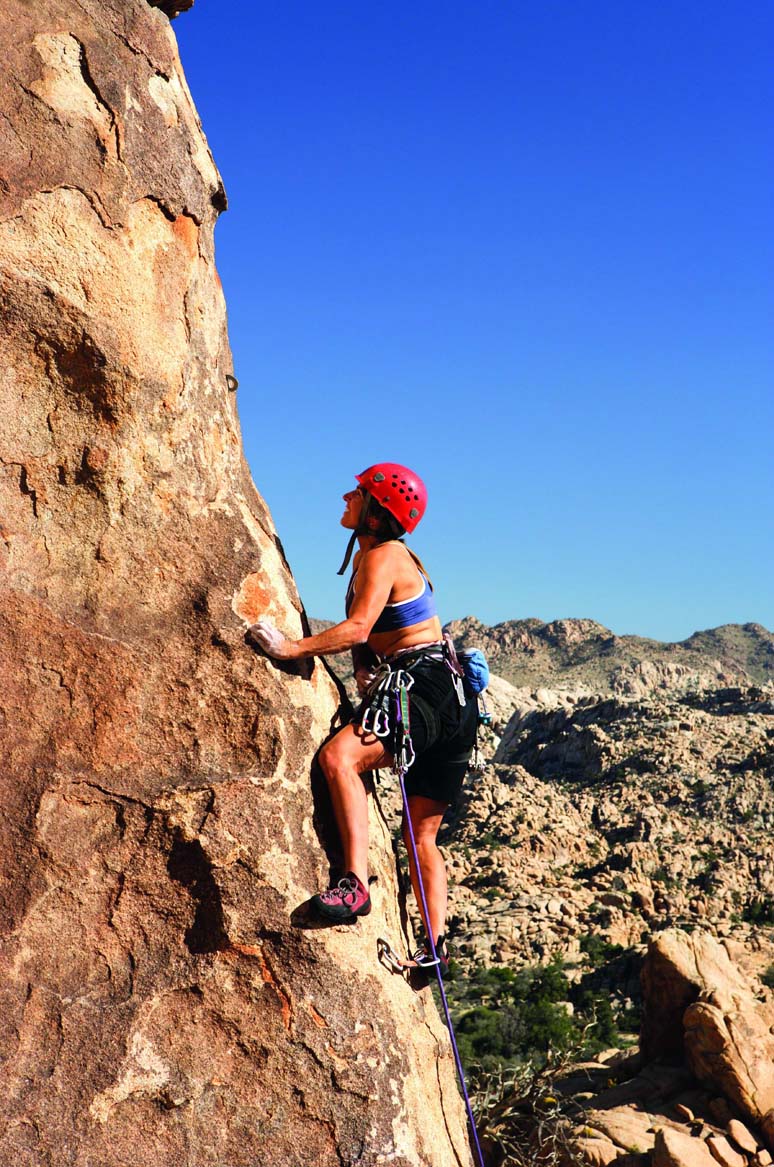
Rock climbing in Joshua Tree National Park.
iStockphoto
Camping
Looking to pitch a tent? Hiking and camping often go hand in hand in California, where many state parks have campgrounds as well. Whether you want to camp with your car nearby and have access to showers and bathrooms, or backpack into the wilderness for a few days, you’ll find plenty of options to choose from all over the state. Just be sure to plan ahead; many campsites book up months in advance.
Cycling and mountain biking
Just north of the Golden Gate Bridge, opposite San Francisco, the Marin Headlands and Mount Tamalpais are considered the birthplace of mountain biking. Miles of scenic trails are the perfect routes for this bouncy recreation, though bikers share the trails with hikers and equestrians. Across the bay, road cyclists take long Wine Country tours on the rolling hills that wind through the scores of vineyards. California’s central coast also has miles and miles of trails for bikers.
Up in Tahoe, summer adventurers can carry mountain bikes on the lifts of many ski areas to explore the alpine network of trails, some with bird’s-eye views of Lake Tahoe. Meanwhile in the northeast corner of the state, bicyclists (of both the road and mountain variety) will find abundant trails and out-of-the-way roads to explore on two wheels, as long as the bikes are sturdy. (Be sure to have them checked out before you undertake a trip like this; garages are few and far between.)

Zabriskie Point, Death Valley.
Martyn Goddard/Apa Publications
Diving and snorkeling
Scuba diving is extremely popular in Monterey and along the coast south of the city. The kelp, long and spindly at the base and stretching up to form thick mats at the surface, ranges all along the coast, forming fantastic underwater forests through which divers swim in search of the Garibaldi, ling cod, and many types of rockfish. Shark-diving (in cages) is also possible out by the Farallon Islands near San Francisco.
On rainy spring days in the forest slopes above Sonoma, thousands of red-bellied salamanders come out of the woodwork (literally), crawling to the stream beds to spawn.
On the northwest coast, cold-water diving gear (a 7mm wetsuit, hood, booties, fins, mask, snorkel, and 20lbs/9kg of lead to sink all that neoprene) equips you to hunt for abalone. This giant mollusk is a delicacy, but prying them off the rocks at depth is not for the casual swimmer (and needs a special permit; www.dfg.ca.gov/marine/faq.asp).
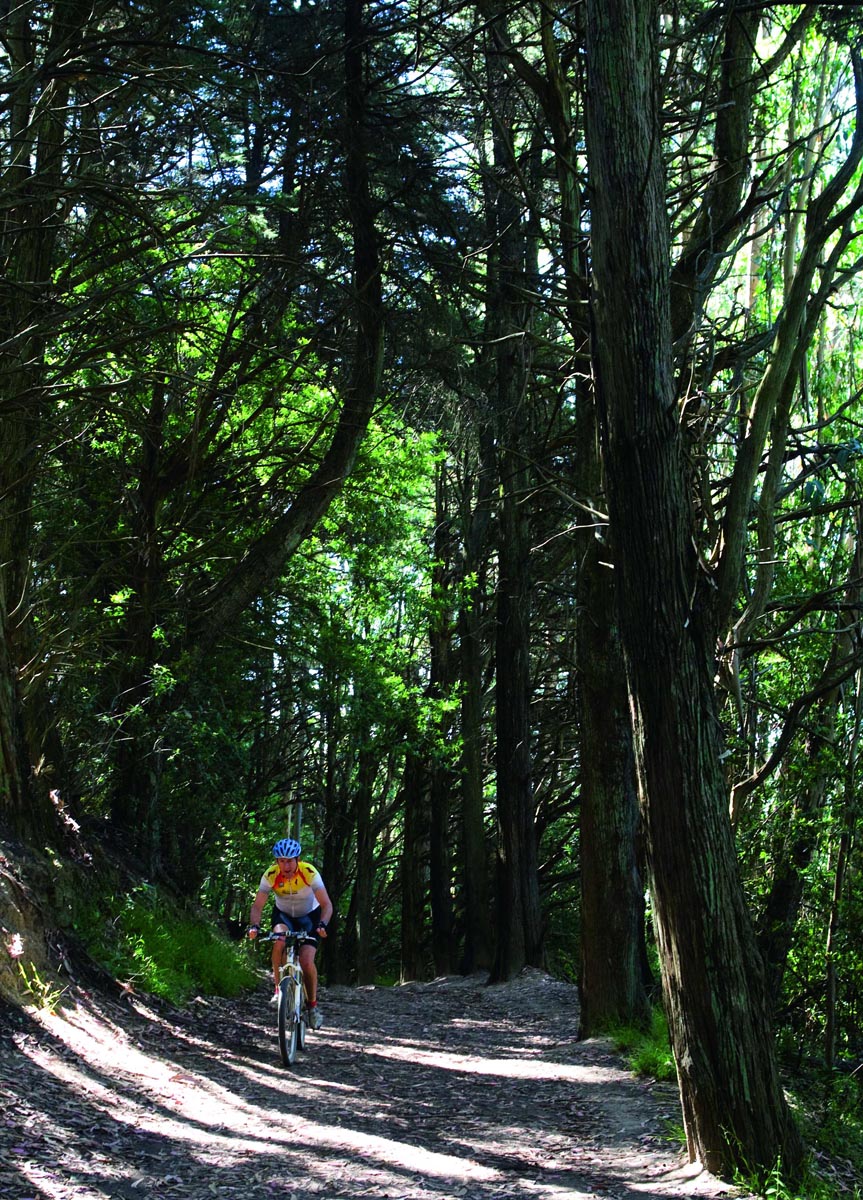
Mountain biking in Mount Tamalpais State Park.
David Dunai/Apa Publications
Diving is also increasingly popular among the kelp beds in the San Luis Obispo region, the Santa Catalina Islands, and Channel Islands National Park.
Fishing
At the coast, you can cast from rocks or piers, or embark on a “party boat” to probe the depths for salmon, ling cod, rockfish, and other denizens of the deep. Unusual, chilling sport can be had pursuing surf smelt: the fisherman uses a big triangular net on a frame, plunging the net into oncoming breaking waves, and tends to get soaked completely. The nets are available for rent; the smelt, sometimes caught by the bucketful, are deep fried for dinner and then eaten whole.
Inland, up near Lassen Volcanic National Park and the surrounding national forest, many alpine lakes dot the area, and children will spend long days paddling driftwood logs like surfboards and watching the big, wary trout cruise slowly below.

Pebble Beach Golf Links has hosted the US Open Championships five times and overlooks Carmel Bay.
David Dunai/Apa Publications
Sharks are under far more predatorial pressure from man than surfers and windsurfers are from them; many biologists fear that the prehistoric fish are being hunted to extinction out of misplaced fear and misunderstanding.
Fishermen, particularly fly fishermen who enjoy floating tiny nymphs in the surface film of chalk streams, will find abundant game and frequent caddis and mayfly hatches on the McCloud, Pit, and Fall rivers, as well as within the winding banks of Hat Creek, Hot Creek, Battle Creek, and the many other notorious streams of the area.
Golf
From Napa Valley to Palm Springs to San Diego, you can play golf all over the Golden State, but a few destinations in particular should move to the top of the list for passionate golfers. First on the list is Pebble Beach, where you’ll find the Pebble Beach Golf Links (home to the AT&T Pebble Beach National Pro-Am) and Poppy Hills. In February, the Buick Invitation Tournament takes place at Torrey Pines Golf Course, where two championship courses offer players ocean views. Click here.

Snorkeling at Laguna Beach, Orange County.
David Dunai/Apa Publications
Hiking
With numerous state parks, national parks, and wilderness areas, California provides superlative opportunities for hiking for all skill levels. Yosemite National Park offers everything from intense climbs with magnificent views of granite cliffs to easy trails along the valley floor. This is some of the Sierra’s best backpacking country, where you can hike for many days without reaching a road (though careful planning and wilderness permits are required).
Kings Canyon, less accessible and more rugged than Yosemite National Park, has both groves of giant sequoias and deep granite-walled canyons that were carved by glaciers. To walk among giant redwoods, visit Sequoia National Park, Muir Woods National Monument north of San Francisco, Redwood National Park, or Prairie Creek Redwoods State Park. Great hiking can also be had in Big Sur, Lake Tahoe, Anzo-Borrego, and parts of the deserts.
For a full list of state parks and information on the hundreds of hiking trails and campsites, visit www.parks.ca.gov. In general, most parks offer trails with various skill levels, and provide trail maps at visitor centers that help you plan your hikes. Some parks have a small day-use fee or parking fee.
Kayaking
A popular pastime in Monterey is to rent simple open-topped kayaks, called “scuppers,” to paddle out to the local kelp beds. There you’re likely to encounter one of California’s most delightful wild animals, the winsome and intelligent sea otter, once hunted for its fur but now a favorite of animal lovers. The creatures are often seen floating on their backs with an infant sleeping on their belly, lolling about in the water, fastidiously cleaning their fur or crunching on a just-caught shellfish. Other great places for beginners are Morro Bay, Sausalito, and Tomales Bay, while more experienced sea kayakers will love the Channel Islands, Santa Catalina Island, and La Jolla.
Rock climbing
California has some of the most diverse climbing in the country, with opportunities in both halves of the state. In Southern California, Joshua Tree National Park offers high desert climbing on 8,000 climbing trails, perfect for winter when other areas are too cold.
In April through October, climbers come to Yosemite for sheer granite cliffs, including the famed El Capitan, with its 3,000ft (900-meter) face. In Northern California, Bishop and Lassen national parks are good options, as are Sequoia and Kings Canyon national parks.

Whitewater rafting on the Truckee River.
David Dunai/Apa Publications
Sailing and windsurfing
Sailing is possible in both Northern California – near San Francisco Bay, Santa Cruz, and Monterey – and all along the Southern California coast. On a spring or summer afternoon, you’re likely to catch sight of hundreds of windsurfers south of San Francisco, braving the cracking swells and blowing sands of Gazos Creek, Scott Creek, and Waddell Creek. The last is considered one of the best windsurfing spots in the country, where experts are often spotted jumping waves and pulling spectacular aerial maneuvers with names like “killer loop” and “cheese roll.”
The Mojave – named after a Southwestern native tribe and pronounced mo-hahv-ee – covers much of the southeast portion of California, floating like a mirage out of Arizona and ending up against the precipice of the Sierras at their southern extreme.
The northwest coast is somberly beautiful: gray skies, long, empty beaches littered with driftwood, rugged sea cliffs, sawmills and fishing towns, and forests that end at cliff edges.
Windsurfing is also popular at Jalama Beach County Park on the end of Point Conception, the jutting corner of the state where the coast turns east. Wind that whips across the point propels windsurfers up and over the biggest and ugliest of the waves.
Surfing
Surfing is what California is most famous for, thanks to the Beach Boys. Both competitive and recreational surfers take the waves along California’s coast. San Diego and Los Angeles coasts are particularly popular – the 130-mile (210km) area between the two cities stands out for the sharp blue line of the ocean. The water is warm here, pushed north by the Japan current, and the swells are manageable in most places, even for novice surfers.
But be aware that surfing has become a rather territorial pastime and has gained a somewhat unfriendly reputation. However, if you’re willing to settle for something less challenging, try bodyboarding; you can paddle out at almost any non-surfing beach and be assured of a good time.
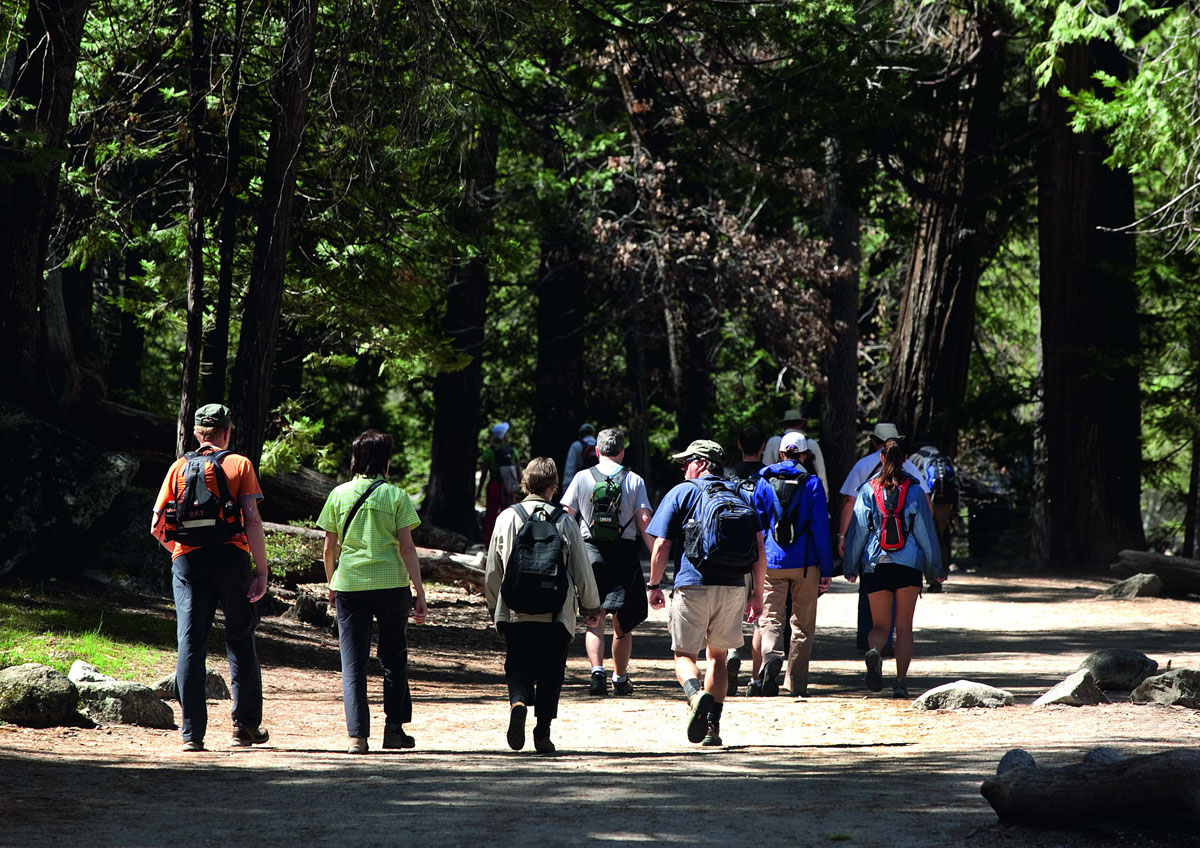
Hiking in Yosemite National Park.
Martyn Goddard/Apa Publications
For the most part, coastal swimming is best kept for Southern California. Because of undertows and riptides on the northwest coast, the waves can be powerful and dangerous, and are no place for the novice.
Other popular waves are found at San Luis Obispo’s long beaches, which are interspersed with high cliffs. In the north, competitive surfing is found closer to Santa Cruz. Off the coast of Half Moon Bay, an annual surfing competition is held at Mavericks.
Whale watching
During winter and spring, you can gaze from cliffs or boat cruises to spot migrating gray whales. There are numerous spots along the California coast to look for migrating whales. Dana Point, Point Reyes (including from the lighthouse), Redwood National and State parks, and Santa Cruz are all options in Northern California, while Santa Barbara and San Diego (especially Cabrillo National Monument at Point Loma) are good bets in Southern California. Click here for whale watching near San Francisco.
Death Valley National Park
At 282ft (86 meters) below sea level, Death Valley is the lowest point on the North American continent. At least five million years ago, this deep gap was formed by earthquakes and the folding of the earth’s crust, creating what is known as a graben or rift valley. As you hike or camp, you may be lucky enough to spot California’s horned lizard, a diamondback rattlesnake, a desert tortoise, or an endangered gila monster (North America’s only poisonous lizard). Pack rats and kangaroo rats, bats, hawks, and low-swooping falcons make their home here, too. At night, you’ll very probably fall asleep to the melancholy howling of coyotes.
“More free sunshine falls on this majestic range than on any other… It has the brightest weather, brightest rocks, …. and the brightest forests of silver firs and silver pines…” John Muir (1838–1914), founder of the Sierra Club.
Whitewater rafting
The Sacramento area is popular with whitewater rafters of all abilities, while adrenalin junkies seek out the thundering rapids of Burnt Ranch Falls on the Trinity, and the cataracts of Hell’s Corner Gorge or the Ikes Falls on the Klamath. The breathtaking forest drops of the California salmon are at once beautiful and thrilling. On the other hand, you can float for many days in inflatable kayaks with nary a ripple on the lower Klamath River and parts of the Trinity. Within sight of fertile vineyards and cottage-style wineries, the Russian River and Cache Creek are popular rafting and canoeing streams.
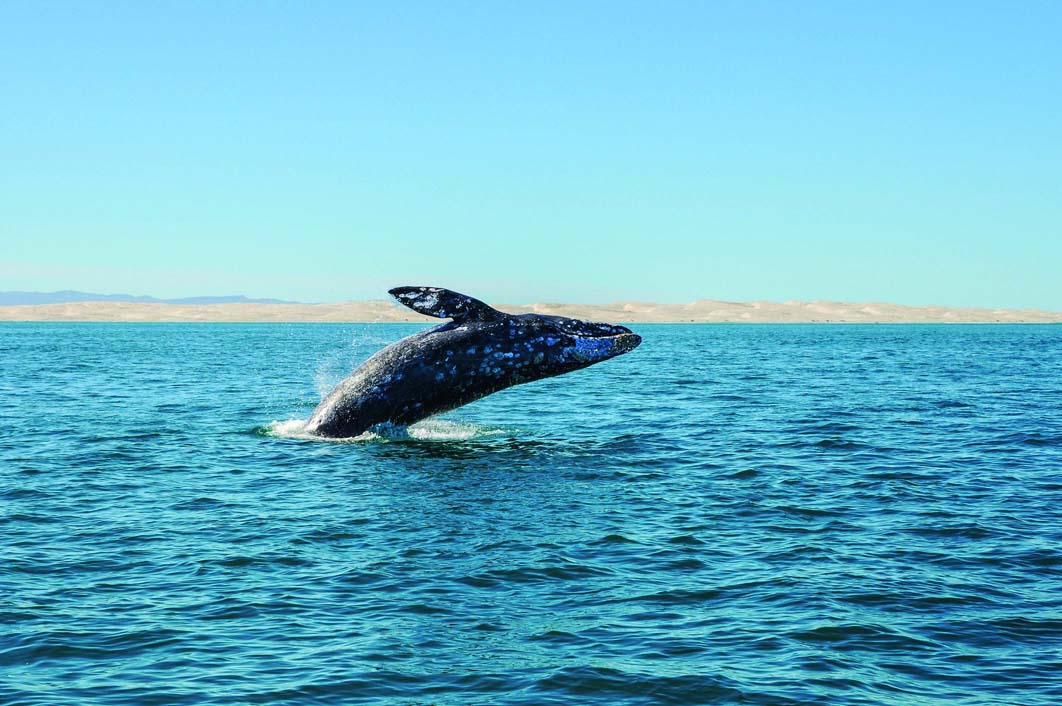
Spot whales off the central California coast.
Dreamstime
Winter sports
Tahoe offers California’s biggest and best concentration of snow sport opportunities. Attracting the most skiers are Squaw Valley on the North Shore, and Heavenly Mountain at the South Lake. Squaw has a giant hotel, an Olympic history, an ice-skating rink on top of the mountain, a climbing wall, a spa, and several shops. Heavenly is just as good; it’s a question of choice. Many smaller areas – Kirkwood, Homewood, Sugar Bowl, Northstar, and Donner Ridge – are more friendly spots to ski, although the sheer vertical drops are not as great. In addition to downhill skiing and snowboarding, you can give cross-country skiing and snowshoeing a try.
On the Sierra’s east slope, Mammoth Mountain is central California’s premier ski area. Here, the mountains slope down to the desert plain of the Owens River Valley, not far north of the precipitous drop into Death Valley. Resorts generally offer equipment rentals, individual or group lessons for all skill levels, and day, weekend, or season passes. For more information on ski resorts in California, Click here.
Just 27 miles (43km) from Fisherman’s Wharf lie the Farallon Islands, once called the “Devil’s Teeth.” The islands themselves are off-limits to the public (only a limited part is inhabited, by researchers), but these jagged outcroppings provide a rich sanctuary for 23 species of marine mammals, including 18 types of whales and dolphins, plus seals, seabirds, and great white sharks that migrate here to breed in summer and fall.
A whale-watching excursion allows for the ultimate vantage point to observe these magnificent creatures as they frolic and cavort in their temporary environment. SF Bay Whale Watching runs full-day expeditions from Fort Mason to the Gulf of the Farallones on weekends from November through June. Get up close to gray, blue, and humpback whales, dolphins, seals, and sea lions as the boat sails from Fisherman’s Wharf beneath the Golden Gate Bridge to the roiling waters of the Pacific Ocean.
A naturalist expert is on board the motor-catamaran to narrate throughout the trip, point out areas of special interest, and answer questions about local wildlife. Be sure to dress warmly, and be advised that water outside the Golden Gate can be quite choppy.
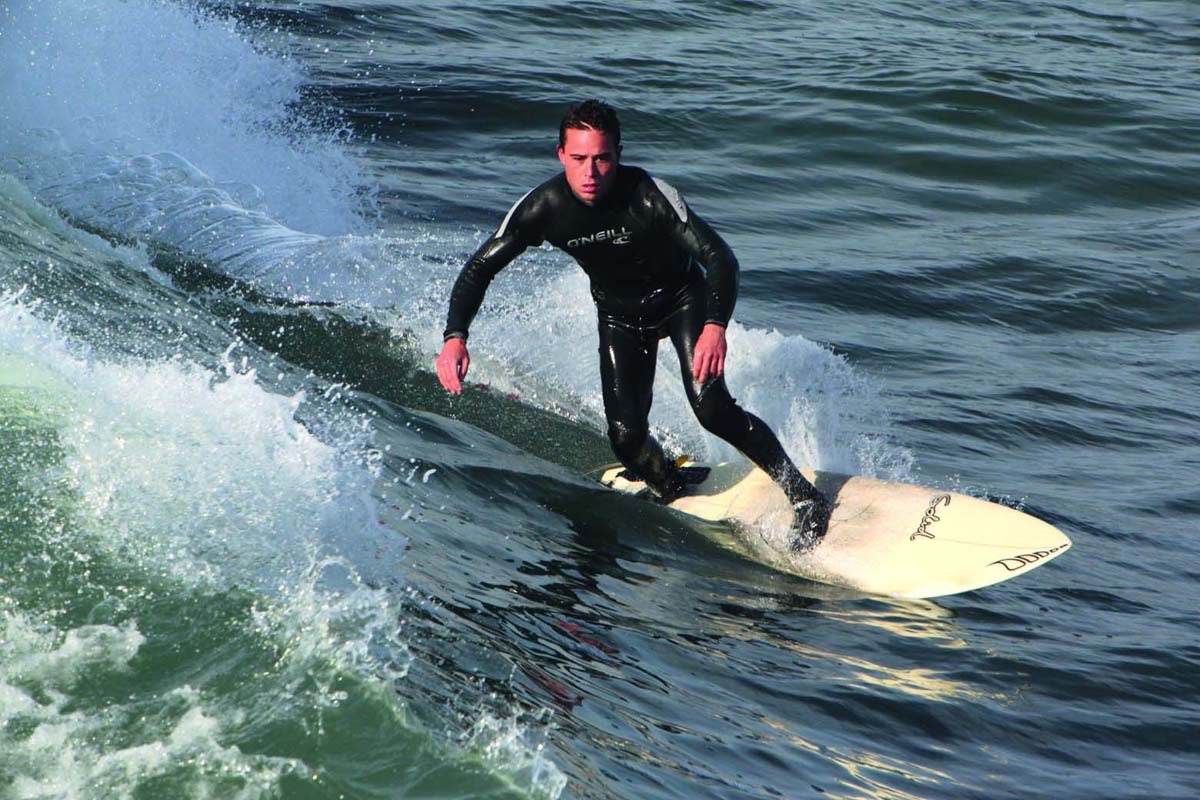
Surfing at Ocean Beach, San Diego.
David Dunai/Apa Publications